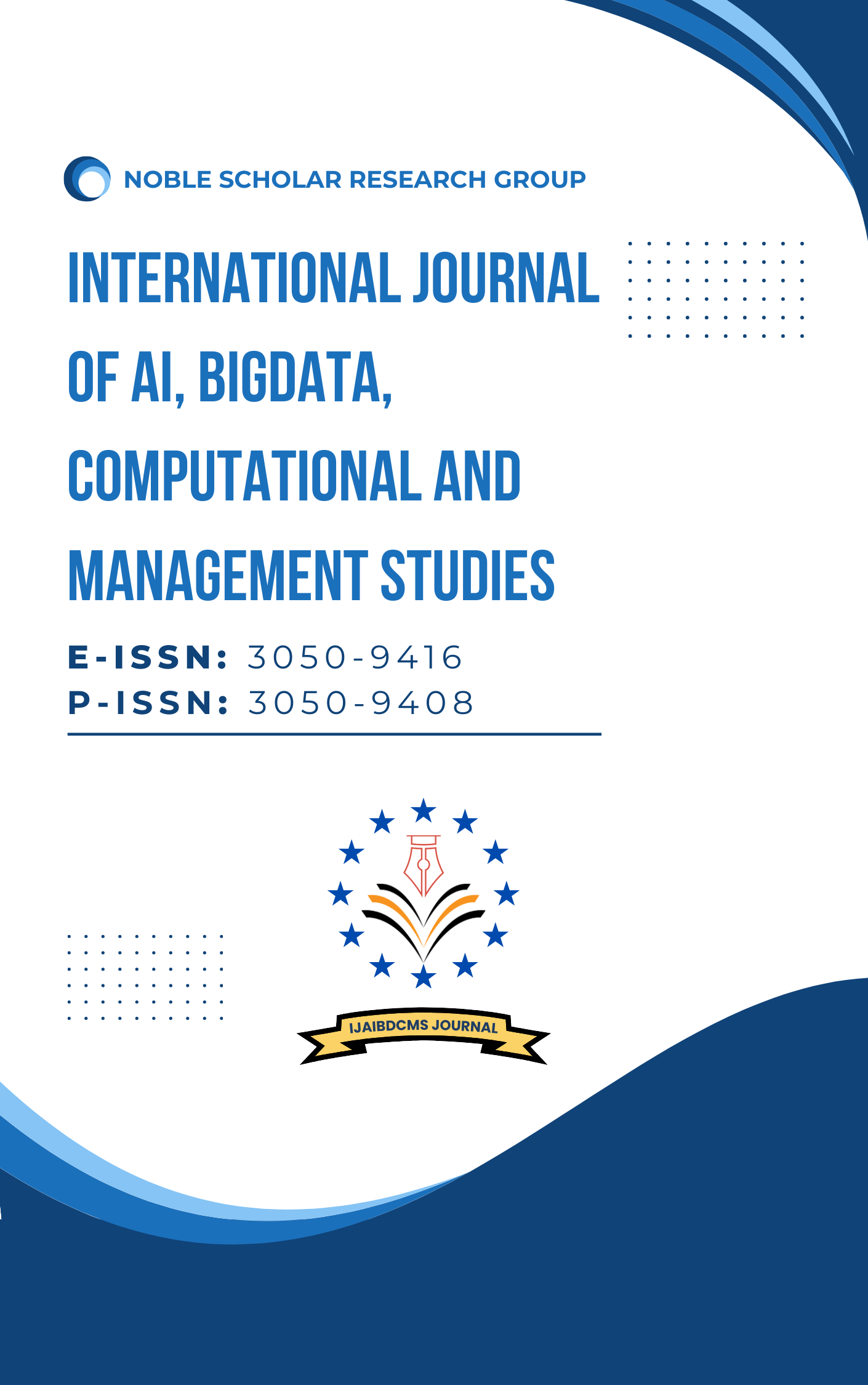Quantum Computing’s Impact on Banking Encryption: Preparing for Post-Quantum Security
DOI:
https://doi.org/10.63282/3050-9416.IJAIBDCMS-V4I3P105Keywords:
Quantum Computing, Banking Encryption, Post-Quantum Security, Post-Quantum Cryptography (PQC), Quantum-Resistant Cryptography, Cryptographic Standards, NIST PQC Standards, TLS Encryption, Digital SignaturesAbstract
Quantum computing has emerged as a transformative technology that holds the potential to revolutionize various industries, including banking. As quantum computers continue to advance, they pose significant risks to existing encryption methods that secure sensitive financial data. Traditional cryptographic systems, such as RSA and elliptic curve cryptography (ECC), are foundational to modern banking security; however, these methods rely on mathematical problems that quantum algorithms, notably Shor's Algorithm, could solve exponentially faster than classical computers. This paper explores the impact of quantum computing on banking encryption systems and discusses the urgent need for post-quantum cryptography. We examine the vulnerabilities of current banking encryption protocols, the status of quantum-safe cryptographic algorithms, and strategies for implementing quantum-resistant systems in the financial sector. The transition to post-quantum security requires collaborative efforts among financial institutions, regulatory bodies, and quantum computing researchers to ensure a secure and efficient implementation of future-proof encryption standards. This paper emphasizes the importance of early adoption and the proactive steps required to safeguard banking systems against the imminent quantum threat
References
1. P. W. Shor, "Algorithms for quantum computation: Discrete logarithms and factoring," in Proceedings of the 35th Annual Symposium on Foundations of Computer Science, Santa Fe, NM, USA, Nov. 1994, pp. 124-134.
2. J. A. Preskill, "Quantum computing and the entanglement frontier," Quantum 2, pp. 79-120, 2018. [Online]. Available: https://quantum-journal.org/papers/79-120/
3. R. L. Rivest, A. Shamir, and L. Adleman, "A method for obtaining digital signatures and public-key cryptosystems," Communications of the ACM, vol. 21, no. 2, pp. 120-126, 1978.
4. A. J. Menezes, P. C. van Oorschot, and S. A. Vanstone, Handbook of Applied Cryptography. CRC Press, 1996.
5. D. J. Bernstein, "Post-quantum cryptography," Proceedings of the 5th International Conference on Post-Quantum Cryptography, Darmstadt, Germany, May 2007, pp. 325-338.
6. J. Grover, "A fast quantum mechanical algorithm for database search," Proceedings of the 28th Annual ACM Symposium on Theory of Computing, Philadelphia, PA, USA, May 1996, pp. 212-219.
7. National Institute of Standards and Technology (NIST), "Post-Quantum Cryptography," NIST Special Publication 800-208, Dec. 2020. [Online]. Available: https://nvlpubs.nist.gov/nistpubs/SpecialPublications/NIST.SP.800-208.pdf
8. B. Eastwood and S. J. Devitt, "Quantum computing for banking: An analysis of its future implications," Journal of Financial Technology, vol. 12, no. 4, pp. 35-40, 2019.
9. M. G. Reed, "Securing financial data: The challenges of quantum encryption," Journal of Cybersecurity, vol. 9, no. 2, pp. 112-119, 2021.
10. S. McKinley and J. Kravitz, "Building quantum-resilient infrastructure in financial systems," International Journal of Financial Innovation, vol. 8, no. 1, pp. 50-61, 2020.
11. M. K. Khan, "Strategies for post-quantum cryptography in the banking sector," Quantum Security Review, vol. 4, no. 3, pp. 200-215, 2021.
12. R. Harris and D. R. Venter, "The role of quantum computing in revolutionizing encryption and its effect on banking," Financial Engineering and Risk Management Journal, vol. 22, no. 1, pp. 22-34, 2020.
13. V. M. Aragani, "Securing the Future of Banking: Addressing Cybersecurity Threats, Consumer Protection, and Emerging Technologies," International Journal of Innovations in Applied Sciences and Engineering, vol. 8, no.1, pp. 178-196, Nov. 11, 2022..
14. P. K. Maroju, "AI-Powered DMAT Account Management: Streamlining Equity Investments and Mutual Fund Transactions," International Journal of Advances in Engineering Research, vol. 25, no. 1, pp. 7–18, Dec. 2022.



